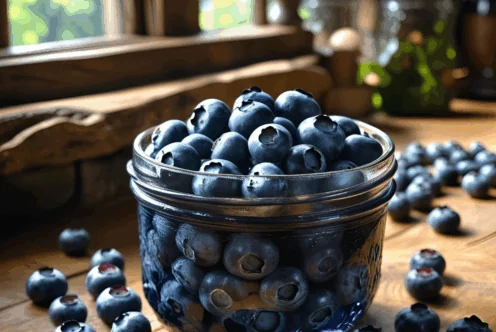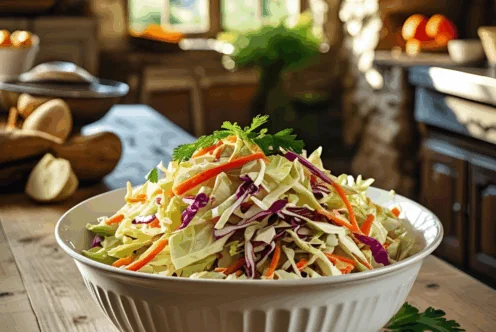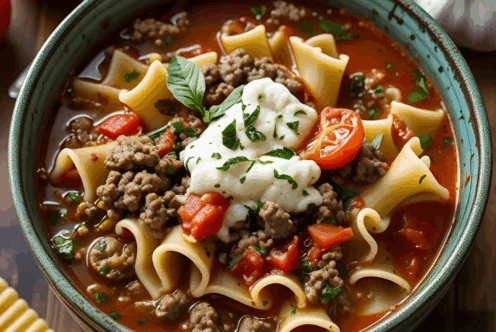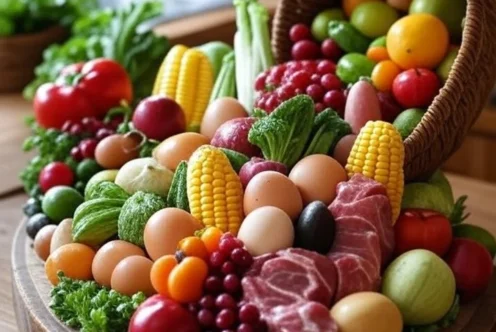Blog
What Nutrition Does Corn Have? Kernel by Kernel
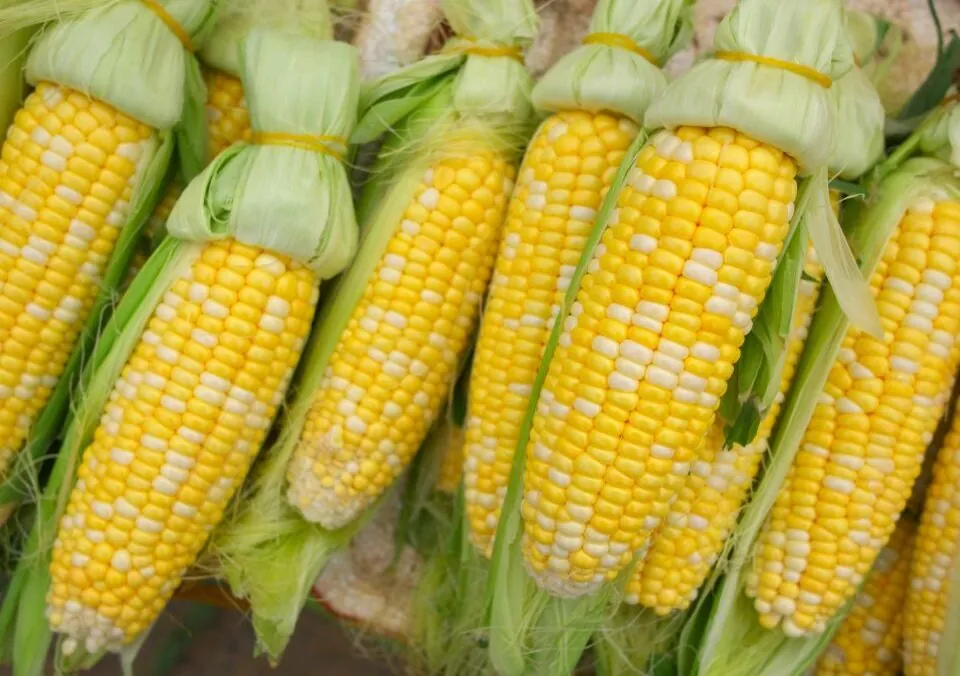
In Arizona, we grow two kinds of corn: sweet corn and field corn. Sweet corn is grown for human consumption, and the field corn is grown on Arizona farms for dairy and beef cattle. The state is known for growing both well.
Regarding human consumption of corn, also known as maize, corn is one of the world’s most versatile and widely consumed crops. From the golden kernels on a summer cob to the processed cornmeal in tortillas, corn is a staple in diets across the globe. Beyond its culinary flexibility, corn offers a range of nutritional benefits, making it a valuable component of a balanced diet.
Native Americans have been growing corn for centuries as a core staple in their diet. Corn is considered an essential part of their diet, including using corn in heritage ceremonies. So the use of corn in diets and traditions holds a strong heritage in Arizona.
In this article, we’ll break down the nutritional profile of corn, kernel by kernel, exploring its macronutrients and micronutrients, health benefits, and considerations for adding it to your diet.
The Anatomy of a Corn Kernel
Before diving into nutritional details, it’s helpful to understand the structure of a corn kernel. Each kernel is a tiny package of nutrients, composed of three main parts:
- Pericarp: The outer, fibrous layer that protects the kernel.
- Endosperm: The starchy core that makes up the bulk of the kernel and provides energy.
- Germ: The nutrient-rich embryo, packed with healthy fats, vitamins, and minerals.
This structure contributes to corn’s diverse nutritional offerings, as each part contains different compounds that benefit the body in unique ways.
Macronutrients in Corn: Fuel for the Body
Corn is primarily a carbohydrate-rich food, but it also provides small amounts of protein and fat. Let’s break down the macronutrient profile of corn, focusing on a 100-gram serving of cooked yellow corn kernels (approximately one medium ear of corn):
- Carbohydrates: Corn is a significant source of carbohydrates, providing about 21 grams per 100 grams. These carbs are mostly complex, derived from the starchy endosperm, which provides a steady source of energy. About 2 to 3 grams of this is dietary fiber, which supports digestive health and promotes satiety. Corn’s fiber content is modest compared to other vegetables, but it still contributes to gut health by feeding beneficial gut bacteria.
- Protein: Corn contains approximately 3.4 grams of protein per 100 grams. While not a complete protein (it lacks sufficient amounts of certain essential amino acids like lysine and tryptophan), corn can complement other protein sources, such as beans, to form a complete protein profile. This is why corn and beans are a traditional pairing in many cuisines, like Mexican tortillas and beans.
- Fat: Corn is low in fat, with about 1.5 grams per 100 grams. Most of the fat is found in the germ and consists of healthy unsaturated fats, including polyunsaturated and monounsaturated fatty acids. These fats support heart health and provide a source of energy.
- Calories: A 100-gram serving of corn provides roughly 96 calories, making it a relatively low-calorie, nutrient-dense food. The caloric content can vary slightly depending on the corn variety (yellow, white, or blue) and preparation method (boiled, grilled, or processed).
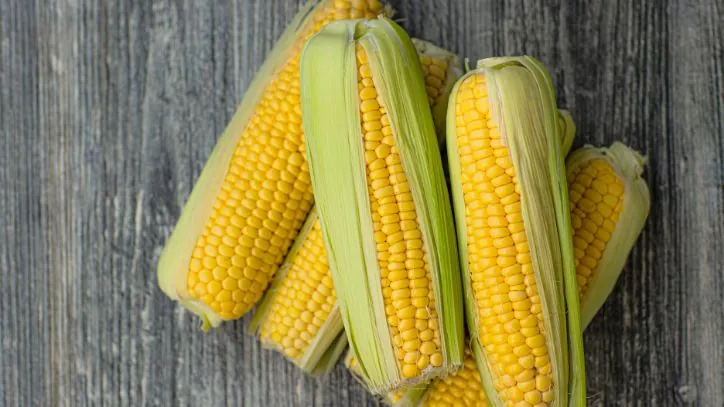
Micronutrients: The Hidden Gems in Every Kernel
Corn is not just about energy; it’s also packed with essential vitamins and minerals that support various bodily functions.
Vitamins:
- Vitamin B1 (Thiamin): Corn provides about 0.09 mg (7% of the Daily Value, or DV). Thiamin is crucial for energy metabolism and nerve function.
- Vitamin B3 (Niacin): With approximately 1.7 mg (11% of DV), niacin supports skin health, digestion, and nervous system function.
- Vitamin B5 (Pantothenic Acid): Corn offers about 0.7 mg (14% of DV), which is involved in hormone production and energy metabolism.
- Vitamin B6 (Pyridoxine): At 0.1 mg (6% of DV), this vitamin aids in brain health and mood regulation.
- Folate: Corn contains around 23 mcg (6% of DV), important for DNA synthesis and cell division, particularly during pregnancy.
- Vitamin C: With about 5.5 mg (6% of DV), corn provides a small dose of this antioxidant, which supports immune function and skin health.
Minerals:
- Magnesium: Corn provides approximately 26 mg (6% of DV), which supports muscle and nerve function, as well as bone health.
- Phosphorus: With about 77 mg (11% of DV), phosphorus is essential for strong bones and teeth.
- Potassium: Corn offers around 218 mg (5% of DV), which helps regulate blood pressure and fluid balance.
- Manganese: At 0.2 mg (9% of DV), manganese supports metabolism and bone development.
- Zinc: Corn contains about 0.6 mg (5% of DV), which is important for immune function and wound healing.
Antioxidants
Yellow and blue corn varieties are particularly rich in antioxidants. Yellow corn contains lutein and zeaxanthin, carotenoids that promote eye health by protecting against age-related macular degeneration. Blue corn, less common but growing in popularity, is rich in anthocyanins, powerful antioxidants with anti-inflammatory properties.
Health Benefits of Corn: Why It’s More Than Just a Side Dish
Corn’s nutrient profile translates into several health benefits, making it a valuable addition to a balanced diet. Here are some key advantages:
- Energy Boost: The complex carbohydrates in corn provide sustained energy, making it an excellent choice for athletes or anyone needing a quick, natural energy source. The B vitamins in corn further enhance energy metabolism by helping the body convert food into usable energy.
- Digestive Health: The fiber in corn supports healthy digestion by promoting regular bowel movements and feeding beneficial gut bacteria. This can help prevent constipation and support healthy gut microbiome.
- Eye Health: The lutein and zeaxanthin in yellow corn are critical for maintaining healthy vision. These carotenoids accumulate in the retina, protecting it from damage caused by blue light and oxidative stress.
- Heart Health: The combination of fiber, potassium, and healthy fats in corn supports cardiovascular health. Fiber helps lower cholesterol levels, while potassium helps regulate blood pressure. The unsaturated fats in the germ may also reduce the risk of heart disease.
- Antioxidant Protection: The antioxidants in corn, particularly in colored varieties like blue or purple corn, help combat oxidative stress and inflammation, which are linked to chronic diseases like cancer and heart disease.
- Gluten-Free Option: Corn is naturally gluten-free, making it a safe and nutritious choice for individuals with celiac disease or gluten sensitivities.
Nutritional Variations: Fresh, Canned, or Processed Corn
The nutritional content of corn can vary depending on how it’s prepared or processed. Here’s a quick comparison:
- Fresh Corn on the Cob: Boiled or grilled corn retains most of its nutrients, especially if minimally processed. However, boiling can leach some water-soluble vitamins like vitamin C into the cooking water.
- Canned Corn: Canned corn is convenient but may have added salt or sugar, which can affect its nutritional profile. Draining and rinsing canned corn can reduce sodium content.
- Cornmeal and Corn Flour: These processed forms of corn, used in products like tortillas or polenta, retain much of the carbohydrate content but may lose some vitamins and minerals during processing. Whole-grain cornmeal is a better choice, as it includes the nutrient-rich germ and pericarp.
- Popcorn: Air-popped popcorn is a low-calorie, high-fiber snack, providing about 4 grams of fiber per 3-cup serving. However, added butter, oil, or sugar can significantly increase its calorie and fat content.
Considerations and Potential Drawbacks
While corn is nutritious, there are a few considerations to keep in mind:
- Glycemic Index: Corn has a moderate to high glycemic index (GI), meaning it can cause a rapid spike in blood sugar, especially in processed forms like cornmeal or corn syrup. Pairing corn with protein or healthy fats can help mitigate this effect.
- Nutrient Absorption: Corn contains phytic acid, an “anti-nutrient” that can bind to minerals like iron and zinc, reducing their absorption. Soaking, fermenting, or sprouting corn (as in traditional preparation methods like nixtamalization) can reduce phytic acid and improve nutrient bioavailability.
- Allergies and Sensitivities: While rare, some individuals may be allergic to corn or sensitive to certain proteins in it. Those with corn allergies should avoid corn-based products.
Incorporating Corn into a Healthy Diet
Corn’s versatility makes it easy to include in a variety of dishes. Here are some ideas for enjoying corn’s nutritional benefits:
- Grilled Corn on the Cob: Brush with olive oil and sprinkle with herbs for a nutrient-packed side dish.
- Corn Salad: Combine fresh corn kernels with black beans, tomatoes, avocado, and lime juice for a fiber- and protein-rich meal.
- Polenta: Use whole-grain cornmeal to make creamy polenta, topped with vegetables and lean protein.
- Popcorn: Opt for air-popped popcorn seasoned with spices.
- Tortillas: Choose whole-grain corn tortillas for tacos or quesadillas to maximize fiber and nutrient intake.
Conclusion
Corn, kernel by kernel, is a nutritional powerhouse that offers a balance of carbohydrates, fiber, protein, and essential micronutrients. Its versatility, affordability, and global availability make it a dietary staple for millions. From supporting energy needs to promoting eye and heart health, corn’s benefits are undeniable. However, mindful preparation and portion control are key to maximizing its nutritional value. Whether you enjoy fresh off the cob or as part of a traditional dish, corn proves that good nutrition can be both delicious and accessible.














